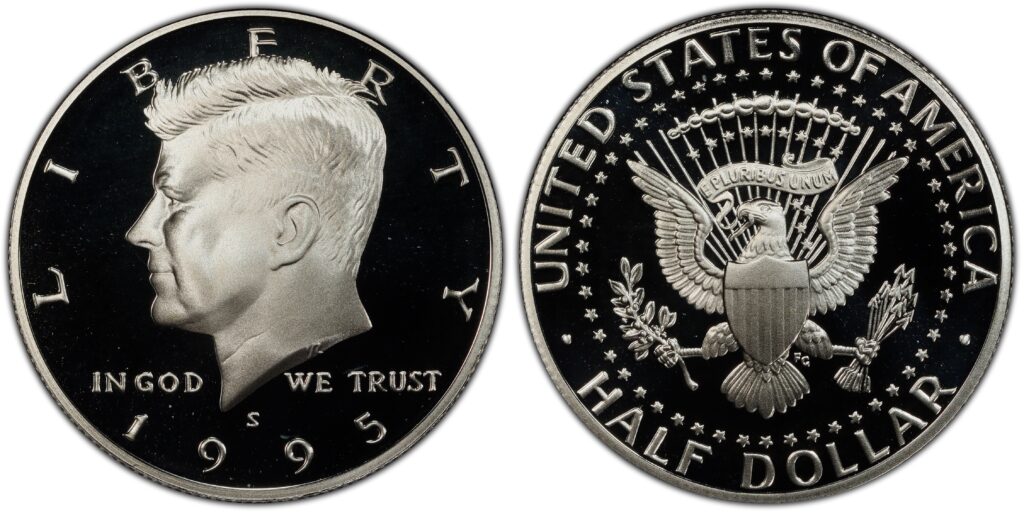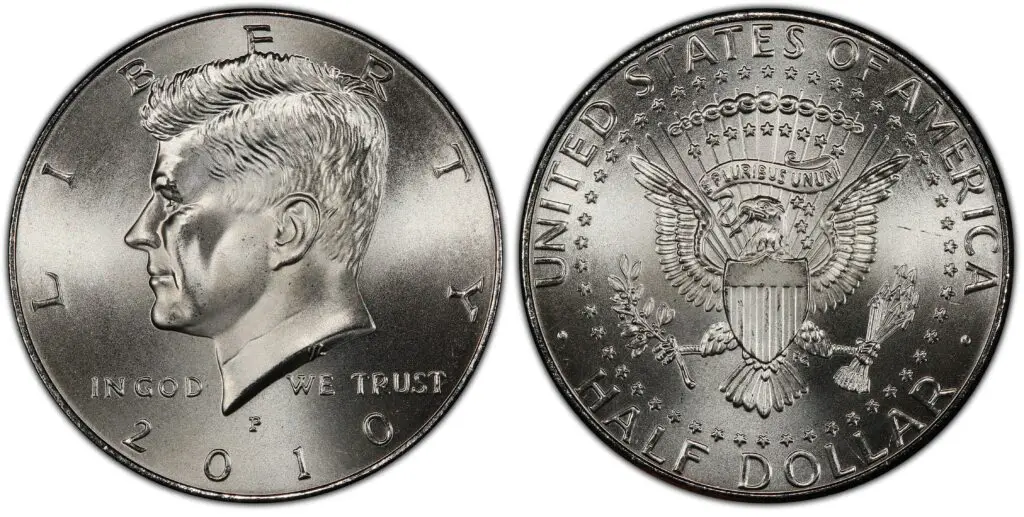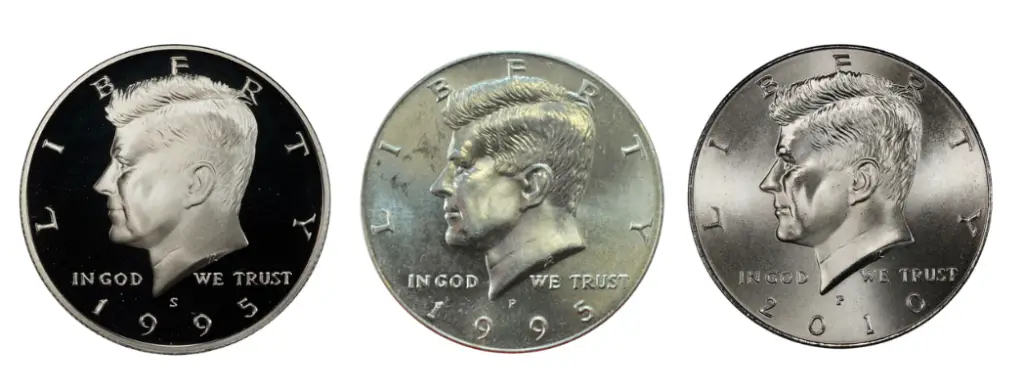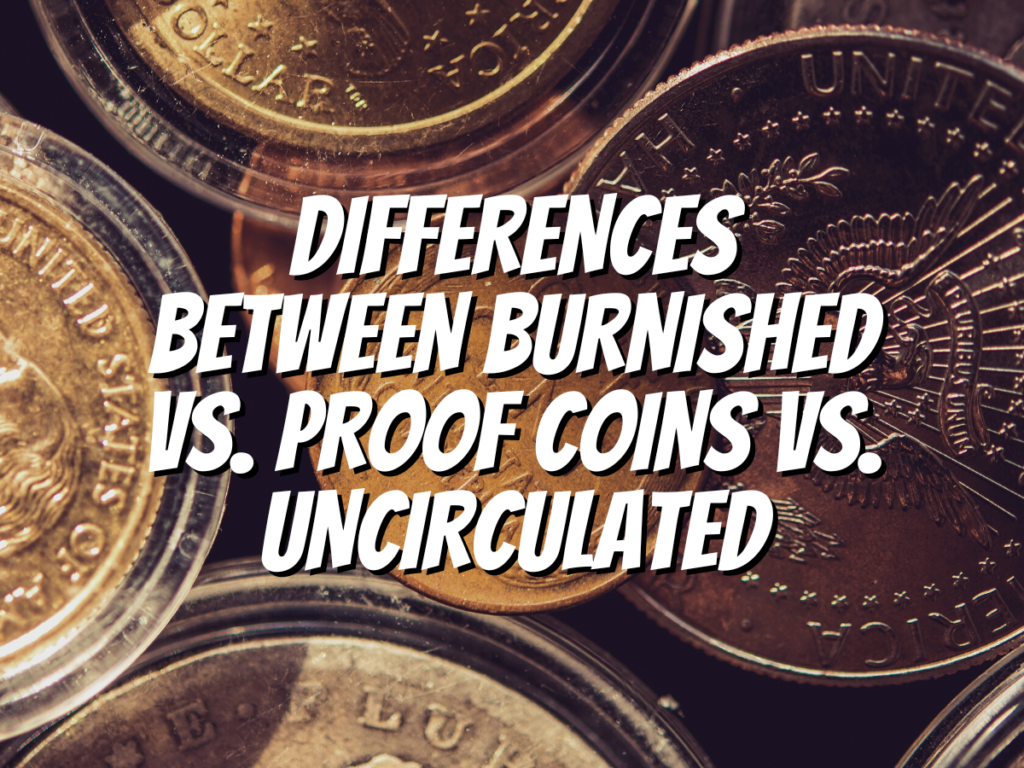The world of coin collecting is a complicated and mysterious place.
Some people argue about burnished vs. proof coins vs. uncirculated coins. Some people have never heard of proof, uncirculated, or burnished coins.
If you’ve ever wondered what the difference between these terms means and if they’re more valuable than one another, you’re on your way to finding out!
In this article, we’ll explain each term’s meaning and value differences so you can decide when buying coins for your collection.
What are Proof Coins?

A Proof coin is a type of coin that is minted using a special and meticulous process to create high-quality coins, primarily intended for collectors.
It is worth noting that modern Proof coins frequently exhibit mirror-like fields and frosted devices.
Coins that were struck before the mid-twentieth century and are proof are typically identified solely by their surfaces of high quality.
It’s important to note that whenever we use the term “Proof,” we’re referring to either the coin type or the production method.
This process gives them their characteristic shine and makes them highly reflective in direct light.
The final stage in making proof coins is for them to go through chemical treatment, where all excess metal is removed from their surface, leaving behind only tiny flecks which give them their distinctive look.
What are Uncirculated Coins?

When we talk about an “uncirculated coin,” we’re referring to a coin’s condition that suggests it has never been used in the regular money supply of the economy.
So, we can see here that the coin doesn’t exhibit any signs of wear on its surfaces. Remember, folks, all coins enter the economy via the Federal Reserve Bank.
So, if you want uncirculated coins at face value, the only option is to buy them directly from your bank.
There are some special collector coins and sets that you can get from the mint for a higher price.
Well, because modern coins are produced in such large quantities, they typically have some minor nicks and scrapes on their surface from the production process and be transported in bags and bins.
Nonetheless, these slight imperfections do not arise from the coin being in circulation, so the coin remains classified as uncirculated.
What are Burnished Coins?

These coins have been burnished to achieve a distinct appearance. The term “burnished” pertains to the method employed to remove the coin’s surface.
Their finishing process gives the coin a smooth and shiny appearance, much like a proof coin. However, the matte finish gives it a unique satin look that sets it apart.
So, to achieve the burnishing process, they place the coin in a special drum with polishing media, like steel beads.
As the drum rotates at high speeds, it gently abrades the coin’s surface, removing blemishes and imparting a uniform sheen.
They don’t involve any chemical treatment in this process and ensure that the coin’s original appearance is preserved.
In 2006, The United States Mint introduced burnished coins as a unique variation of the American Silver Eagle.
Other mints have also produced burnished coins, such as the Canadian Maple Leaf and the Chinese Panda.
Differences Between Burnished vs. Proof Coins vs. Uncirculated:

The U.S. Mint mints proof coins, while the government does not produce uncirculated coins.
Proofs have a mirror-like finish and are minted using specially polished dies and blanks, whereas uncirculated coins are struck with regular dies on blanks that have been cleaned and buffed but not polished to a high shine like proofs.
Uncirculated coins may also be referred to as “mint state.” However, this term is best avoided because it has several different meanings in numismatics.
For example, it can mean that no wear has occurred on a coin from being used in commerce (as opposed to proof or burnished), or it could mean that all known examples of a particular date or series have been found in uncirculated condition (e.g., 1932 Washington Quarter Uncirculated).
Burnished coins are also struck at the U S Mint with regular dies–in fact, they’re made exactly like their non-burnished counterparts except for one difference: after punching out blanks from planchets and placing them into coin presses, burnishing machines come along and smooth off those areas which were stamped out of metal during die preparation processes–and voila! Your very own shiny new quarter dollar!
Which is More Valuable Between Proof, Uncirculated, and Burnished Coins?
Burnished Coins: The least valuable of all three types of coins. However, if you have a burnished coin in your collection and want to sell it, that’s okay too!
Proof coins are more valuable than uncirculated coins, and proof coins are the most valuable of all three types of coins.
Proof Coins: Proof is an official designation given by the mint when they guarantee that each coin will look perfect under magnification (10x magnification).
The mint ensures no blemishes or imperfections can be seen on any of its proof sets before they go into mass production.
Uncirculated Coins: Uncirculated means “new” or “fresh.” This term is used for modern-day uncirculated coinage with no wear from being handled over time or carried around in pockets or purses; however, these terms may not apply to older historical items that were never circulated because there were not many people with access to them back then!
These historical pieces may have been saved as part of collections for hundreds of years before finally making their way onto eBay today, where anyone could buy them online instead of just through antique dealerships nearby.
Before you go…
So, we’ve looked at the differences between Proof, Uncirculated and Burnished coins. Which one is right for you? If you want to add a coin collection to your home or office, an un-circulated coin might be a good choice. On the other hand, if you are interested in history and want a piece of history preserved forever as it was minted, then proof coins are perfect!
Check out my next article: “Are Proof Coins a Good Investment?“
Related Articles:

